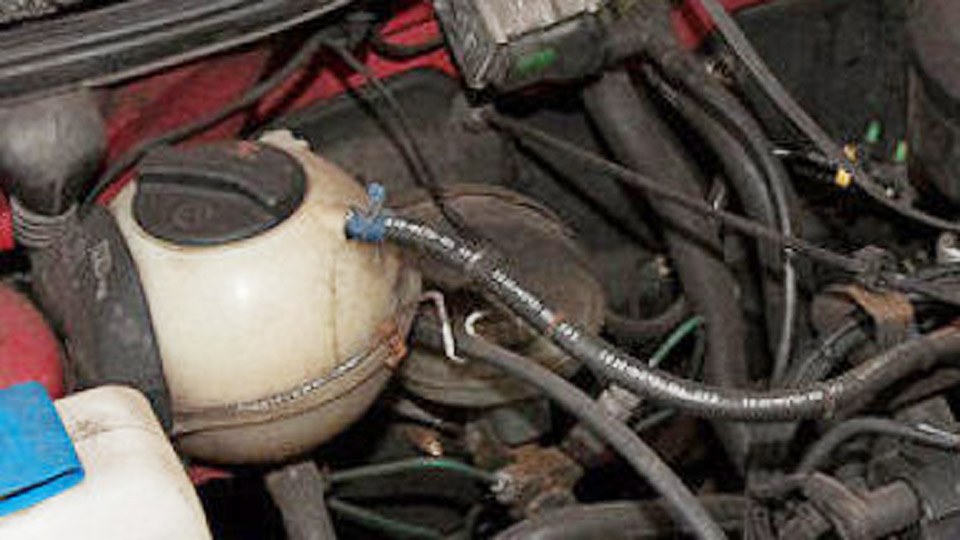What Is the Round Cylinder on Top of a Classic Car Engine?
When you pop the hood of a classic car, like a 1969 Camaro or a 1972 Dodge Charger, you can’t miss that round, shiny cylinder perched on top of the engine. It’s often chrome-plated, sometimes painted, and always looks like it’s got a story to tell. That’s the air cleaner, a critical part of the engine that’s been around since the dawn of the automobile.
I first got curious about it when I was restoring my 1965 Ford Falcon. The air cleaner wasn’t just for show—it’s a hardworking component that keeps the engine breathing clean air. Let’s dive into what it does, how it works, and why it’s so iconic in classic cars.

Photo by stackexchange
Role of the Air Cleaner in a Classic Car
The air cleaner’s job is simple but vital: it filters the air going into the engine. Engines need air to burn fuel, but that air has to be clean. Dust, dirt, bugs, and road grime can wreak havoc if they get sucked into the combustion chambers. I learned this the hard way when I took my Falcon for a spin without an air cleaner during a rebuild.
The engine sputtered, and I later found grit in the carburetor. The air cleaner traps those contaminants, ensuring only clean air mixes with fuel for smooth, efficient combustion.
In classic cars, the air cleaner sits on top of the carburetor, the device that mixes air and fuel before it heads to the engine. The air cleaner’s round shape isn’t just for looks—it’s designed to house a filter element and direct airflow efficiently. Most classic car air cleaners are made of metal, often with a chrome or painted finish, giving them that eye-catching retro vibe.
How the Air Cleaner Works
Air gets sucked into the engine through the carburetor as you drive. The air cleaner sits on top, with a filter inside that catches dirt and debris. The filter is usually made of paper, foam, or cotton gauze, depending on the car and the owner’s preference. The air passes through the filter, gets cleaned, and flows into the carburetor, where it mixes with fuel.
The air cleaner also has a lid and a base, often held together with a wingnut or clamps. Some have a snorkel—a tube that sticks out to pull in cooler air from outside the engine bay. I remember swapping out the stock air cleaner on my Falcon for one with a longer snorkel to get better performance. Cooler air is denser, which means more oxygen for combustion, giving the engine a little extra pep.
Why the Air Cleaner Looks So Distinctive
If you’ve ever seen a classic car at a show, you know the air cleaner is a centerpiece of the engine bay. Back in the 1950s and 60s, carmakers like Ford, Chevy, and Mopar went all out to make their engines look as good as they performed. Chrome air cleaners became a hallmark of muscle cars and hot rods. Some even had decals or badges, like “427” or “Hemi,” to show off the engine’s power.
I once saw a 1967 Pontiac GTO with a chrome air cleaner so polished it was like a mirror. It wasn’t just functional—it was a statement. Carmakers knew buyers loved that bold, shiny look, and it became a signature of the era. Even today, when I’m at a car show, the air cleaner is often the first thing that catches my eye under the hood.
Types of Air Cleaners in Classic Cars
Not all air cleaners are created equal. I’ve worked with different types, each with its own quirks. Here’s a rundown of the most common ones you’ll find in classic cars:
Standard Single-Snorkel Air Cleaner
This is the most common type, found on everyday classics like a 1966 Mustang or a 1970 Chevy Nova. It has one snorkel to pull in air and a paper filter inside. It’s simple and effective.
Dual-Snorkel Air Cleaner
High-performance cars, like a 1969 Dodge Charger R/T, often had dual-snorkel air cleaners. These pull in more air for bigger engines, boosting power. They look mean, too.
Open-Element Air Cleaner
Hot rods and custom builds often use these. They’re shorter, with an exposed filter element (usually cotton gauze) for maximum airflow. I put one on my Falcon for a while, but it sucked in more dust than I liked.
Oil-Bath Air Cleaner
Older classics, like 1950s Chevys, sometimes used oil-bath air cleaners. These have a pool of oil at the bottom that traps dirt as air passes through. They’re rare now but were common back in the day.
Each type has its pros and cons, depending on the car and how you drive it. For example, oil-bath cleaners are great for dusty environments but a pain to clean. Open-element cleaners look cool and boost performance but need frequent maintenance.
Why the Air Cleaner Matters for Performance
You might think the air cleaner is just a filter, but it plays a big role in how your engine performs. A clogged or poorly designed air cleaner can choke the engine, reducing power and fuel efficiency. I noticed this when I forgot to clean the filter in my Falcon for a couple of years. The car felt sluggish, like it was gasping for air.
A good air cleaner lets the engine breathe freely while keeping out debris. High-performance air cleaners, like those from K&N, use reusable cotton gauze filters that flow more air than stock paper ones.
When I upgraded to a K&N on my 1973 Camaro, I could feel the difference in throttle response. But there’s a trade-off—high-flow filters can let smaller particles through, so they’re not ideal for dusty areas.
Maintaining Your Air Cleaner
Keeping the air cleaner in top shape is easy but crucial. I learned this after neglecting mine and ending up with a carburetor full of gunk. Here’s how I maintain mine, and what I recommend:
- Check the Filter Regularly: Pop the lid off every few months or after a dusty drive. If the filter looks dirty, it’s time to clean or replace it.
- Clean Reusable Filters: If you have a cotton gauze filter, like a K&N, clean it with a special kit (soap and oil). I do this every 10,000 miles or so.
- Replace Paper Filters: Paper filters aren’t reusable. Swap them out every 12,000 miles or when they look clogged. They’re cheap—usually $10–$20.
- Inspect the Housing: Check for dents, cracks, or loose fittings. A damaged air cleaner can let unfiltered air sneak in.
- Clean Oil-Bath Filters: If you’ve got an oil-bath cleaner, drain the old oil, clean the base, and refill with fresh oil. It’s messy but effective.
Neglecting the air cleaner can lead to bigger problems, like worn piston rings or a gummed-up carburetor. Trust me, a $15 filter is cheaper than a $2,000 engine rebuild.
Problems with Air Cleaners
Over the years, I’ve seen air cleaners cause their share of headaches. Here are some issues to watch for:
- Clogged Filters: A dirty filter restricts airflow, making the engine run lean (too much air, not enough fuel). This can cause hesitation or backfiring.
- Loose Fittings: If the air cleaner isn’t sealed tightly to the carburetor, unfiltered air can get in, damaging the engine.
- Cracked Housings: Old air cleaners can crack, especially if they’ve been overtightened. This lets in dirt and debris.
- Wrong Filter Type: Using a filter that doesn’t fit properly can reduce performance or let contaminants through. I made this mistake once and regretted it.
If your car’s running rough or losing power, check the air cleaner first. It’s an easy fix that can save you a trip to the mechanic.
Upgrading Your Air Cleaner
If you’re restoring a classic or building a hot rod, you might want to upgrade the air cleaner. I did this on my Camaro to get a bit more horsepower. Here are some options:
- High-Performance Filters: Brands like K&N or Edelbrock offer filters that increase airflow. They’re great for muscle cars but need regular cleaning.
- Custom Chrome Covers: A new chrome lid can make your engine bay pop at car shows. Just make sure it fits your existing base.
- Cold Air Intakes: These replace the stock air cleaner with a modern setup that pulls in cooler air from outside the engine bay. They’re pricier but boost performance.
- Breather Kits: For serious builds, you can add breathers to the valve covers to complement the air cleaner, improving engine ventilation.
When I upgraded my Camaro’s air cleaner, I went with a 14-inch chrome open-element unit. It looked amazing and gave the car a throatier growl, but I had to clean it more often. Pick an upgrade that matches your driving style and maintenance habits.
The Cost of Air Cleaner Maintenance and Upgrades
Here’s a quick breakdown of what you might spend on air cleaner maintenance or upgrades, based on my experience:
| Item | Estimated Cost (USD) |
|---|---|
| Replacement Paper Filter | $10–$20 |
| Reusable Filter (K&N, etc.) | $40–$80 |
| Chrome Air Cleaner Housing | $50–$150 |
| Cold Air Intake Kit | $200–$500 |
| Oil-Bath Filter Oil | $5–$15 |
| Cleaning Kit for Reusable Filters | $15–$25 |
Costs vary depending on your car and brand, but investing in a good air cleaner pays off in performance and engine longevity.
Why Air Cleaners Are Iconic in Classic Cars
The air cleaner isn’t just a functional part—it’s a symbol of the classic car era. In the 1960s and 70s, carmakers used air cleaners to showcase their engines’ power. A big, shiny air cleaner screamed “muscle car.” Even today, when I walk through a car show, I see owners proudly displaying their polished air cleaners, often customized with decals or paint to match the car.
For me, the air cleaner is a reminder of why I love classic cars. It’s not just about getting from point A to point B—it’s about the craftsmanship, the style, and the joy of keeping these machines alive. Every time I open the hood of my Falcon or Camaro, that round cylinder brings a smile to my face.
Tips for Classic Car Owners
After years of working on classics, here’s my advice for keeping your air cleaner—and your engine—in top shape:
- Know Your Car: Check your owner’s manual or online forums to find the right air cleaner for your model. Not all classics use the same setup.
- Stay Stock or Go Custom: If you’re restoring a car to original condition, stick with OEM-style air cleaners. For hot rods, experiment with high-flow options.
- Keep It Clean: A clean air cleaner means a happy engine. Make it part of your regular maintenance routine.
- Show It Off: If you’re hitting car shows, polish that chrome or add a custom decal. It’s a small touch that makes a big difference.
Conclusion
That round cylinder on top of a classic car engine is more than just a shiny decoration—it’s the air cleaner, a hardworking part that keeps your engine breathing clean and running strong. From filtering out dirt to boosting performance, it’s a key player in the heart of your classic car. Whether you’re maintaining a stock setup or upgrading for more power, understanding the air cleaner’s role can save you headaches and keep your ride purring.
Frequently Asked Questions
What is the round cylinder on top of a classic car engine?
It’s the air cleaner, a device that filters air going into the engine to keep out dirt and debris.
Why is the air cleaner important?
It protects the engine by ensuring only clean air mixes with fuel, preventing damage from dirt or grime.
Can a dirty air cleaner affect my car’s performance?
Yes. A clogged filter restricts airflow, reducing power and fuel efficiency, and can cause rough running.
How often should I clean or replace my air cleaner filter?
Check it every few months. Replace paper filters every 12,000 miles, and clean reusable filters every 10,000 miles or as needed.
Can I upgrade my air cleaner for better performance?
Absolutely. High-flow filters or cold air intakes can boost horsepower, but they may need more maintenance.
What’s the difference between a paper and reusable air cleaner filter?
Paper filters are cheap and disposable but restrict airflow more. Reusable filters, like K&N, flow better but need cleaning and oiling.
Why do classic car air cleaners look so shiny?
Carmakers used chrome or polished finishes to make engines look bold and powerful, especially in muscle cars.

David Peterson, the chief editor of sparepartscare. I am an automobile engineer and assign to an local firm with much experience in automobile equipment. During the time, most of my experience is related to the Industry of cars parts. I learned about the thing, when working with experienced inspectors, one must be as good as the inspector, or better, with knowledge of the project as well as the practical aspects of automobile industry.






